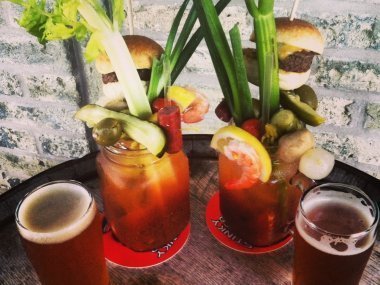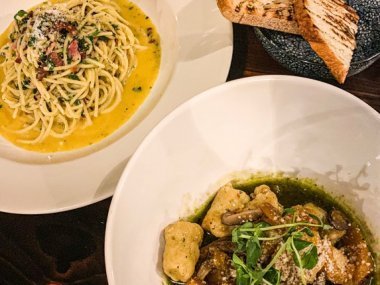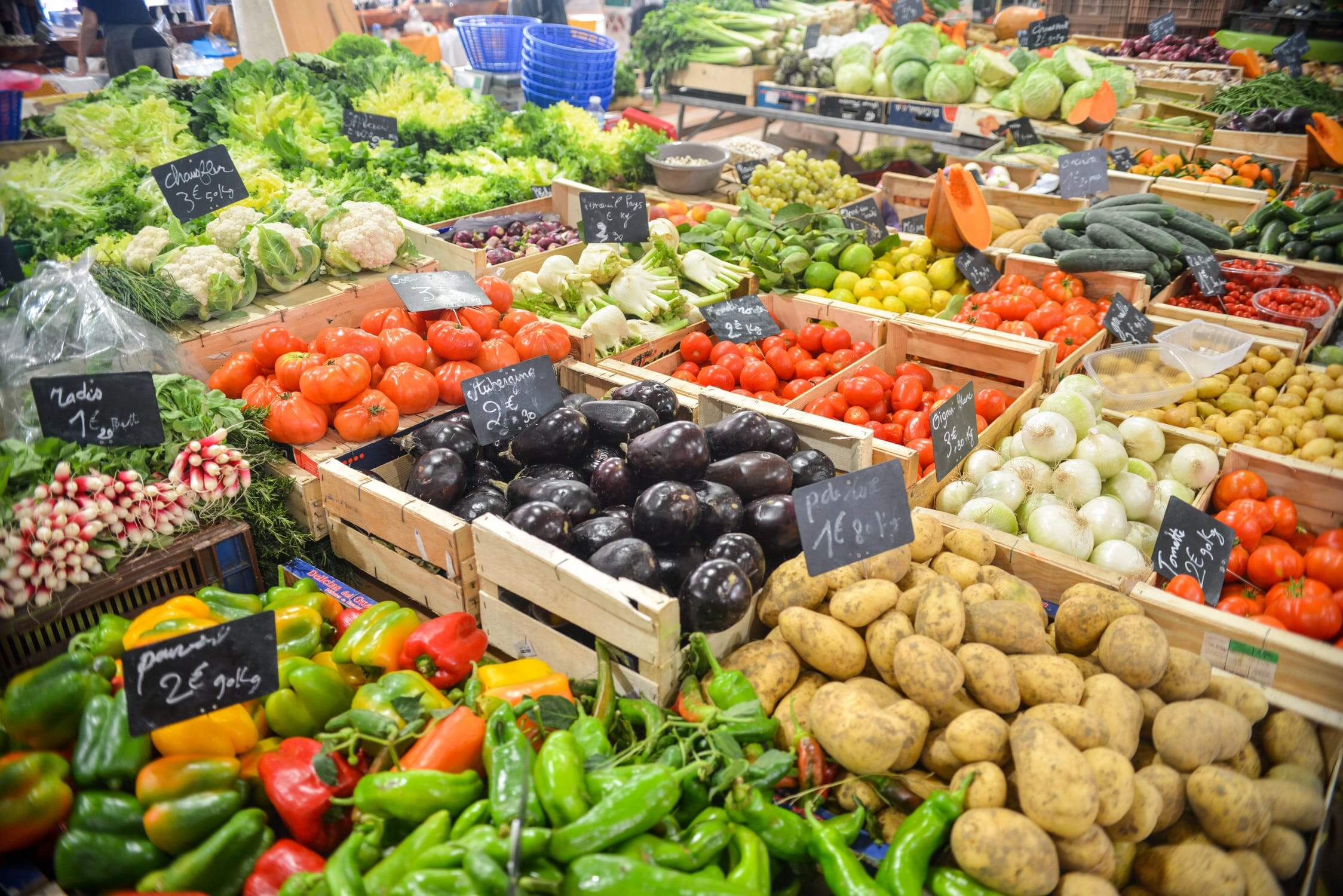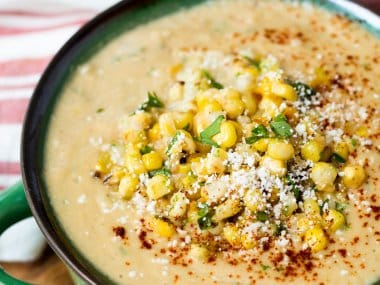Risotto is one of those things that one wouldn’t think could be made into a vegan meal, but you can!
What is risotto? Risotto is a northern Italian rice dish cooked with broth until it reaches a creamy consistency. The broth can be derived from meat, fish, or vegetables.
“Real” risotto contains butter, onion, white wine, and Parmigiano-Reggiano. It is one of the most common ways of cooking rice in Italy.
Is this risotto healthy? Yes! Being plant-based, this meal is not only delicious but nutritious. It serves two, is under 600 calories, is high-protein, and is gluten-free.
Contents
Ingredients

- 1 tsp vegetable broth concentrate
- 14 oz hearts of palm (whole), drained and patted dry
- ½ tsp smoked paprika (normal will work as well)
- 1/2 tsp garlic salt
- 1 shallot, minced (any onion will work but will give it a different taste)
- 3 garlic cloves, minced (divided)
- ½ cup arborio rice
- ½ cup ivory lentils
- 2 oz sliced leeks
- 6 oz cherry tomatoes
- 2 tbsp vegan butter, softened at room temperature
- 1 lemon, zested, one half juiced, one half cut into wedges
- ¼ oz fresh tarragon, leaves picked and chopped
- 1 tbsp white miso paste
- Salt and pepper
- 2 tbsp avacado oil – or whatever oil you prefer to use
Kitchen Tools Needed
- Zester
- Small nonstick skillet
- Large nonstick skillet
- Medium saucepan
- Sharp cuttig knife
- Large Wooden Spoon – to stir risotto
- Pasta bowl
- Garlic press – you don’t need this tool, but if you cook with garlic or ginger a ton this is the best tool to have! So much eaiser than mincing it with a knife.
- Lemon squeezer – another tool you don’t have to use, but it makes jucing lemons a whole ton eaiser! It also is less mess and gets way more juice out o the lemon.
Directions
Make the vegetable broth.
Add 4½ cups water and vegetable broth to a medium saucepan over medium heat. Bring to a simmer, and turn off the heat.2 Cook the hearts of palm
Sautee hearts of palm.
Heat 1 tsp olive oil in a large nonstick skillet over medium-high heat. Add hearts of palm and cook until golden brown, 4 to 6 minutes.
Transfer to a plate, sprinkle with paprika, salt, and pepper, and set aside. Once cooled, slice the hearts of palm into ½ inch rounds.
Sautee shallot and garlic.
Return the skillet to medium heat and add 1 tbsp olive oil. Add shallot and just half the garlic and cook, occasionally stirring, until softened, 5 – 6 minutes.
Add arborio rice, lentils, and a pinch of salt to the skillet. Cook, occasionally stirring until rice is shiny, 2 to 3 minutes.
Next, add ½ cup vegetable broth from the saucepan to the skillet. Cook, often stirring until broth is mostly absorbed, 3 to 5 minutes. Repeat this process until the rice is tender, 35 to 40 minutes. TIP: let the rice absorb most of the broth before adding more.
Sautee the leeks, tomatoes, and garlic.
While the risotto is cooking, place a small skillet over medium heat. Add 2 tsp olive oil, leeks, tomatoes, and the rest of the garlic to the skillet and cook until the tomatoes soften and begin to burst, 6 to 10 minutes.
TIP: If the tomatoes haven’t burst after 10 minutes, add 1 to 2 tbsp of water and mash them lightly with the backside of a fork. We also grew our own tomato plants and used those for this recipe!
Make the butter.
Add butter, lemon zest, tarragon, salt, and pepper to a small bowl and stir to combine.
Serve
Once the risotto is tender and creamy, add the white miso paste and stir to combine. Add salt and pepper as necessary.
Remove risotto from heat, add palm and lemon juice hearts, and stir. Divide risotto between plates and add the tomatoes on top. Dollop with lemon tarragon butter and serve with lemon wedges.
You will want to eat right away because the butter melts fast.
Nutrition Info
CALORIES 560
FAT12g
CARBOHYDRATES 93g
PROTEIN 21g
This creamy risotto recipe is sure to fill your need for a comfort dish without weighing down your organs with fatty dairy ingredients.
If you want to make this for more than two people, you can just double the ingredients.
This exact recipe was more than enough for my fiance and myself, and we had tons of leftovers.
Optional Extras
This dish is pretty basic, leaving room for you to add whatever you want.
I would suggest kalamata olives, more tomatoes, or those eating with others can have shrimp or any other type of meat for your guests to throw in.
I love this recipe because it is vegan but gives you a well-rounded flavor profile that other specific carnivores will enjoy.
If you want to go all out, you can throw a few dollars of vegan cream cheese or heavy whipping cream.
Skip the miso paste
I have met a few people who aren’t the biggest fans of miso paste or simply can’t find the ingredients at their local store. No worries, I have made this recipe without the pate, and it tastes just fine! Unfortunately, the first time I made this, I forgot the miso paste and didn’t know until after I was already done eating.
I will say the miso paste elevates this dish to be above the other risotto recipes I have made.
Wine Pairing
A crisp, clean white wine will pair best with this dish. I suggest a chardonnay or zinfandel.
If you, for some reason, want to use red miso paste instead of white, then I suggest going with red wine. However, remember that any other miso paste color besides white will give you a different final taste.
Risotto History
Rice has been grown in southern Italy since the 14th century, and its cultivation eventually reached Milan in the north. While according to a legend, a young glassblower’s apprentice of the Fabbrica del Duomo di Milano from Flanders, who used to use saffron as a pigment, added it to a rice dish at a wedding feast, the first recipe identifiable as risotto dates from 1809. It includes rice sautéed in butter, sausages, bone marrow, onions with broth with saffron gradually added.
There is a recipe for risotto in the 1854 Trattato di cucina (‘Treatise on Cooking’) by Giovanni Vialardi, assistant chief chef to kings. However, the question of who invented the risotto in Milan remains unanswered today.
The rice varieties now associated with risotto were developed in the 20th century, starting with Maratelli in 1914.
Risotto, unlike other rice dishes, requires regular care and attention. The rice is not pre-rinsed, boiled, or drained, as washing would withdraw much of the starch needed for a creamy texture.
Risotto in Italy is usually the first course served before the main course, but it is often eaten as the main meal in America. Some restaurants will offer it as a side dish to a main protein like steak or chicken.
There are many different variations of risotto, and they differ from region to region.










